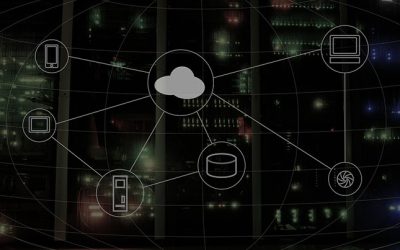Big data is transforming businesses across all industries. Companies are harnessing the data they collect on customers—credit card transactions, web browsing activity, social media engagement, and so forth—to give customers higher-quality experiences delivered precisely when and how customers want.
Today, the concept of fully leveraging the volume, velocity, and variety is as commonplace as customer satisfaction surveys were decades ago. By 2022, 40 percent of all large enterprises will combine big data with machine learning, according to Gartner market research.
One industry, however, that has been slow to keep pace with advances in big data analytics is healthcare. This hesitation is understandable. Pharmacies, insurance providers, doctors, and medical device companies all deal with highly sensitive, confidential patient data, and the healthcare industry is regulated by strict patient privacy laws. But as big data has matured, healthcare providers have become increasingly aware that they don’t have to sacrifice patient confidentiality. Not only can using big data help the healthcare industry meet stringent accuracy requirements and quality standards, but big data also is becoming increasingly essential to delivering the healthcare experiences that patients have come to expect and demand.
The reason why I’m writing this series on how big data is changing healthcare is to show you how every segment of the healthcare market can and should utilize big data to strengthen its position in a competitive marketplace, increase patient satisfaction, and deliver higher-quality care. I’ll explain how big data can specifically benefit payers, providers, pharmacies, and medical health device companies. Then, I’ll look at how Salesforce can help you draw actionable insights from your healthcare data—and why you need a trusted consulting partner like Simplus to maximize the value you get out of Salesforce.
In this first part of my blog series, I’m going to look at the evolution of big data in healthcare and what the future holds for this industry. Here are the three most important things to understand about the past, present, and future of the healthcare industry:
Big data has never been a bonus; it’s always been a necessity
Gathering and organizing data to improve patient care isn’t new. Since the dawn of time, humanity has been collecting information to discover new insights or achieve goals. The invention of the wheel, the explosion of trade, the outbreak of the internet—all done by information, or data, put to use.
The reason we’re drawn to data is simple: We recognize that data drives better outcomes. Weatherhead University Professor Gary King, an expert on how to use data in public health and medicine, declared in 2014, “People are literally dying every day” because data is simply not being shared like it could be to improve world health.
Unfortunately, until recently, we didn’t have the technology to make optimal use of the essential insights that big data can provide. In fact, the phrase “big data” didn’t even gain momentum until the early 2000s. Today, the sources that make up big data are vast and varied: AI, mobile, and social media, to name a few. In 2012, the McKinsey Global Institute estimated we would need another 140,000 to 190,000 workers with deep analytical expertise to handle the growth of big data from all of these new sources. Meanwhile, the World Economic Forum declared data to be an entirely new class of economic asset, much like cash or gold before it.
As much as some industries have embraced big data and used it to their competitive advantage, the healthcare industry has historically lagged behind. But this reluctance to embrace big data is now giving way to…
Want to keep reading? Check out the complete ebook—How Big Data is Changing Healthcare.






















































0 Comments